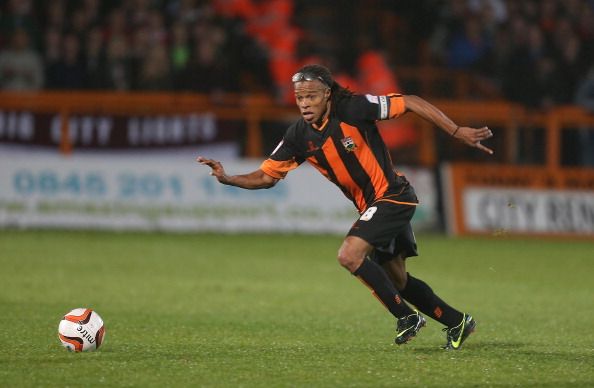
A different angle: The player-coaches in football

Edgar Davids of Barnet in action during the npower League Two match between Barnet and Northampton Town at Underhill
When I was a small kid, I heard an episode narrated by my dad. He told me that a coach had scored a winning goal for his team. I wondered if a coach could play for his team, especially in professional football. That curiosity led me towards some famous names who have donned the player-coach role in their careers, which exhibits a never ending passion for the game and the ever existing desire to etch their names in history.
According to the definition, a player-coach not only owns coaching duties, but can also play for his side. The responsibility he shoulders is unique as he can choose a squad, where he can place himself in the starting eleven. A question would be raging inside your head now; why does a team need a player-coach? I mean, a coach should be enough, right? Let’s try to find the reasons as we look at the rare breed of player-coaches.

Stuart Pearce – player and caretaker-manager of Nottingham Forest
Stuart Pearce, the current England U-21 manager who has also managed Manchester City, had his best playing years at a forgotten name in world football. Nottingham Forest, the two time European Cup winners, who currently play in the Football League Championship, was the club where Pearce made his name as a player. Having played almost 12 years, a 34 year old Stuart Pearce, club captain at the time, was appointed the caretaker player-manager of Forest in December 1996, after former manager Frank Clark had resigned as Forest languished at the bottom of the Premier league.
Pearce managed to collect a manager-of- the-month award in January 1997 but could not help Forest in avoiding the drop. He relinquished his managerial responsibility in March of the same year and left the club at the end of the season.
In May, 2010, Dietmar Hamann, a Champions League winner with Liverpool, was bought by MK Dons at the age of 36 on a one-year contract which offered him a player-coach role. Although his fitness was an issue, Hamann would surely have had a positive impact on the youngsters in his coaching role. Hamann joined Leicester City in February, 2011, this time as a first-team coach.
From the above two instances, one may infer that the player-coach role is a result of desperation, an emergency move to turn the fortunes of a club temporarily, where their tenure is more or less short. It might also seem a ploy used by clubs with limited finance. But as with anything in life, there are exceptions.
Currently, Liverpool seem to be adapting to a new style under the idealistic Brendan Rodgers. The man he replaced, Kenny Dalglish, is a Kop great and also acted as a player-manager between 1985-1991. After Joe Fagan resigned as Liverpool manager in 1985, Dalglish was appointed the manager in a player-manager role. Met with initial scepticism, Dalglish went on to win the League and cup double in his first season in-charge, scoring a crucial goal against Chelsea on the final day of the season. He went on to win another league title in 1987-1988. With age catching up, “King Kenny” decreased his playing time and gave chances to younger talent. The Scottish great continued till 1991 in the dual-role, having guided the Reds to three league titles and two FA cups.
It would have felt so great, scoring crucial goals for the team you are managing. Edgar Davids, the “pitbull” would have felt the same when a man-of-the-match performance from him led Barnet to a 4-0 victory over Northampton a week back. That was the first victory for the football-league-two side in the ongoing season. Davids, who is sharing the manager role with Mark Robson, would surely be tempted to put himself in the starting line-up regularly. But at 39, the “pitbull” will have to use his engine conservatively.
Chelsea have a history of being impatient with managers. Even when you are winning, there is no guarantee that you will be holding your position. But a different set of circumstances lead to Dutch great, Ruud Gullit taking over as Chelsea manager in 1996. Gullit was signed by Glenn Hoddle, who left the post to manage the England team. Ruud Gullit was given the player-manager role and led Chelsea to a FA cup triumph in 1997. It was Chelsea’s first major trophy in 26 years, but in the second season, Gullit was sacked on account of differences with the Chelsea board even though the club was doing well at that time.
Following Gullit’s sacking, Gianluca Vialli, signed by Gullit himself, was appointed the manager, again in a player-manager role. Vialli had a successful stint at the London club, leading Chelsea to a UEFA super cup victory, which made Vialli the youngest manager to win a UEFA competition before Andre Villas Boas won the Europa league with Porto. In his three years as a player-manager, Vialli won the league cup, FA cup, UEFA Cup Winners Cup, Europen Super Cup and the FA community shield. Vialli got the sack in the 2000-2001 season owing to a poor league start and a fallout with his players. Incidentally, Gianluca Vialli was the most successful Chelsea manager at the time.
The famous Brazilian left-wingback, the thunderous thigh equipped Roberto Carlos also acted as the caretaker coach of the Russian version of Manchester City, Anzhi Makhachkala, while remaining a player. Sven-Goran Eriksson, the former England manager, claimed to have offered David Beckham a player-coach role while managing Leicester City. It would have been interesting to see Beckham in that role.
Whatever the results be, the player-coach role adds a different facet to the game of football. Playing with your coach would be an experience of a different kind for the players. It’s a permanent temporary fix for clubs and can be very rewarding as the history suggests.